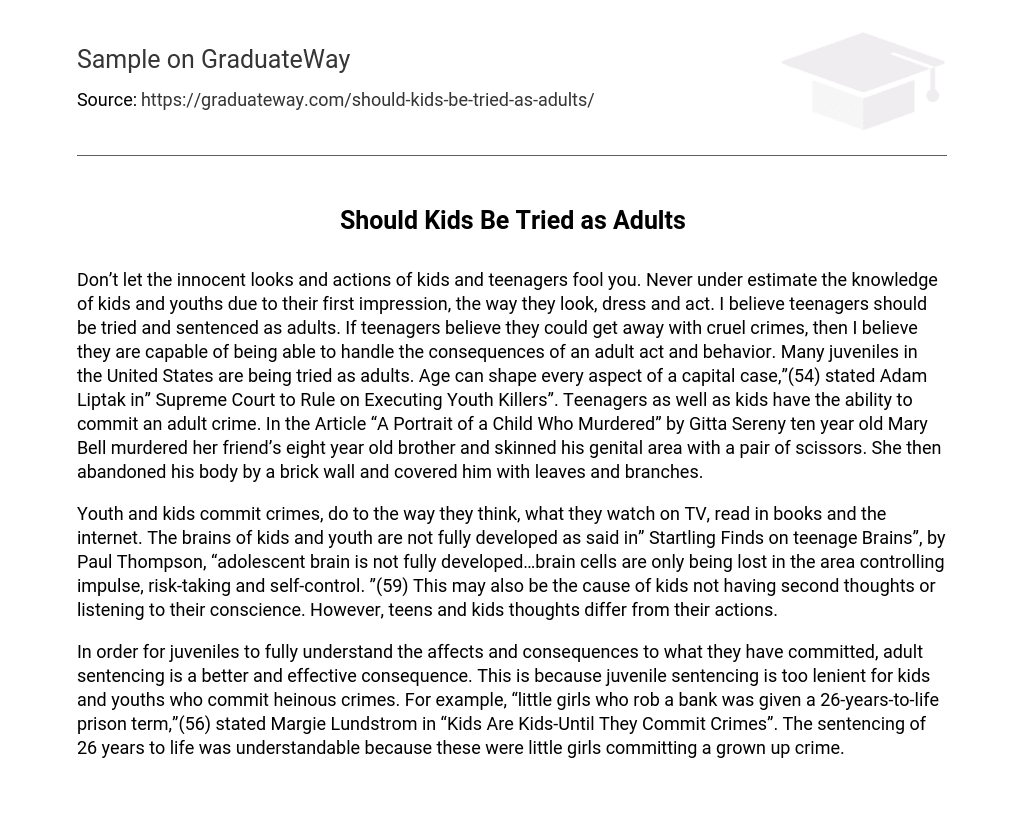The text emphasizes the unfairness of judging children and teenagers solely based on their innocent appearance and actions. It argues that underestimating their knowledge due to their looks, attire, or behavior is unjust. The author believes that teenagers should be held accountable for their actions just like adults. They argue that if teenagers believe they can escape punishment for serious crimes, then they must also face the consequences similar to adults. In the United States, many young offenders are treated as adults in court cases. Age plays a significant role in capital cases as mentioned by Adam Liptak’s article “Supreme Court to Rule on Executing Youth Killers.” Both teenagers and children have the ability to commit crimes typically associated with adults. For instance, Gitta Sereny recounts Mary Bell’s horrifying story in her article “A Portrait of a Child Who Murdered.” At ten years old at the time, Mary Bell brutally killed her friend’s eight-year-old brother by mutilating his genital area with scissors before leaving his body near a brick wall and concealing it with foliage.
Youth and children engage in criminal activities due to their thought processes influenced by various media such as television, books, and the internet. According to Paul Thompson’s article “Startling Finds on Teenage Brains,” the brains of adolescents are not fully developed and continue to lose brain cells specifically in areas related to impulse control, risk-taking, and self-control (59). Consequently, young individuals may lack second thoughts or ignore their conscience. Nonetheless, the thoughts of teens and children often diverge from their actual behaviors.
Adult sentencing is a more suitable and effective consequence for juveniles to comprehend the impacts and repercussions of their actions. This is because juvenile sentencing tends to be too lenient towards children and youths who commit severe crimes. As Margie Lundstrom mentioned in her article “Kids Are Kids-Until They Commit Crimes,” even “little girls who rob a bank” were given a prison term of “26-years-to-life” (56). The decision to impose such a lengthy sentence was justifiable since these young girls were engaged in an adult-like offense.





